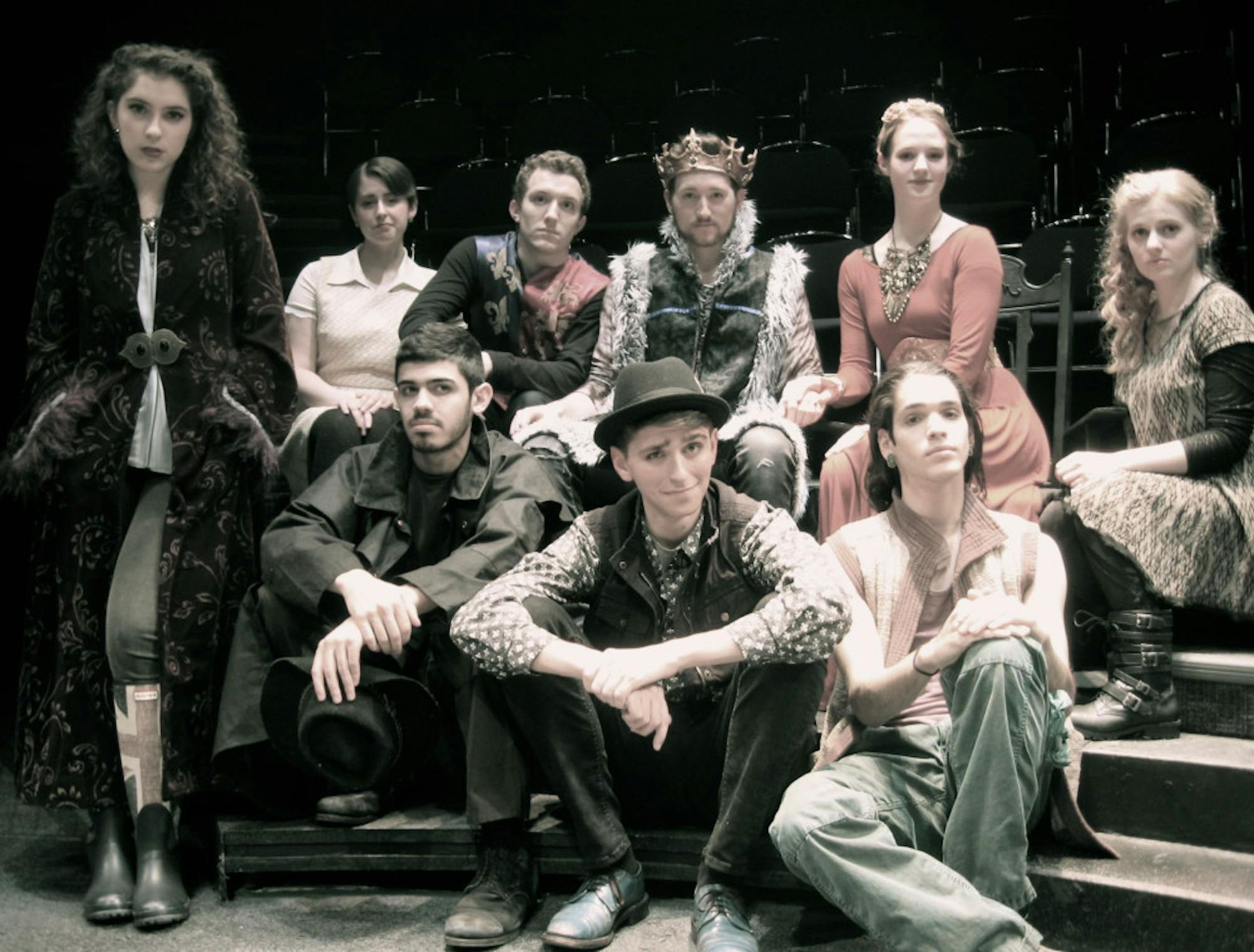Few playwrights have had their works adapted so extremely, variously and frequently as William Shakespeare has. It is far less common, however, for the interpretation of one of his characters to deviate from the norm. Yet, with the discovery, exhumation and reinterment of the titular character of “Richard III” (first performed 1633) in September of 2012, a shift occurred. Faced with irrefutable physical evidence that Shakespeare’s monster was not, in fact, a hunchbacked ogre, but rather the victim of a mild case of scoliosis and the Tudor propaganda machine, theater practitioners began to reexamine their interpretations of Shakespeare’s ultimate villain.
Gibson Cima, a visiting lecturer in the Department of Drama and Dance, not only directed this production, but also adapted it. The Richard of this Tufts production rules over a hole in the ground; more specifically, a hole in the ground in the middle of a parking lot in Leicester, England -- his final resting place. The play opens with archaeologists digging up the remains of the last Plantagenet king. In a way, they are digging up the past. Upon exposing Richard’s twisted bones, each archaeologist inhabits a character from Shakespeare’s play. The transition is a bit muddled, but if one reads this review or the program before seeing the play, it will certainly make more sense than if otherwise.
No two productions of a Shakespeare play are exactly the same -- if not for the liberty taken in their settings, then for what is kept and redacted of the original text. “Richard III” is a long play, but this production runs just over an hour and a half. It hits all the major plot points, yet at times it seems to jump and rely on an audience’s prior knowledge of the play. Granted, this is “Richard III,” and many people will know what they are seeing, but it would not hurt audience members to refresh their memories beforehand.
Cima’s worksite set is meant to evoke a “poor theater” ethos, according to the director himself. Yet the detail and finesse of the production are counter to this intent. The set is rugged, but it is not rough. The light design is outstanding and decadent; much of the show’s spooky, memory-like quality is owed to the lighting. The use of shadow and cool color are reminiscent of the palettes used by shows such as “House of Cards” (2013-present) and “Game of Thrones” (2011-present). If there was any doubt that this was intentionally done, look no further than the show’s promotional material: a skeleton, a sword and a throne. Regardless, this is probably the best use of Balch’s apparently generous lighting apparatus in a long time.
Despite its relative brevity, this production packs a notable amount of violence. Many deaths that take place off stage in other productions are performed with ceremonial cruelty right before the audience. One of the best illusions created and used throughout the production is the use of the hole in the middle of the stage as a vacuum for human lives. One death, as the result of particularly well-done choreography and illusory lighting, was especially frightening and inspired genuine fear for the sake of actor Yuval Ben-Hayun's life. Ben-Hayun, a sophomore, played Clarence, Tyrell, Rivers and Ratcliff in the production.
Senior Marcus Hunter and junior Imogen Browder delivered performances of note, playing Gloucester and King Richard III as well as Queen Elizabeth and Richard of York, respectively. Hunter is hardly ever absent from the audience’s eye, yet he faithfully portrays his disfigured character throughout, and Browder delivers perhaps the best performance of the production. This new adaptation of “Richard III” incorporates an original score, performed beautifully by senior Drew Page (who played Richmond, first murderer and musician), senior Adele McAllister (who played Elizabeth of York, second murderer and musician) and junior Tyler Beardsley (who played King Edward IV and Catesby). The music nuances the atmosphere and enhances the undertones of the play.
The single best moment of the production is the scene prior to the Battle of Bosworth Field in which Richard’s victims come back to haunt him. The scene requires almost, if not every actor to be onstage at once. The illusion they create together is haunting, and the scene is executed perfectly. This scene alone is worth the price of admission. The subsequent battle scene, which employs a similar tactic, however, is extremely disappointing. The former scene is excellent, but it feels like there is missed potential in the latter despite the excellent choreography and technical prowess on display.
The production began performances on April 14 and will bow for the last time on April 18. All performances begin at 8 p.m. and are in Tufts University Balch Arena Theater, Aidekman Arts Building, 40 Talbot Ave, Medford. Tickets are $10 with a Tufts student ID (except for April 16, when they will be $1) and are available at the box office in Aidekman. Students can call the box office at (617) 627-3493 or purchase tickets online.
Richard III: new man, new play

The Tufts Department of Drama and Dance's production of "Richard III" makes use of innovative lighting and setting to tell a uniquely adapted version of the story.
Summary
3 Stars





